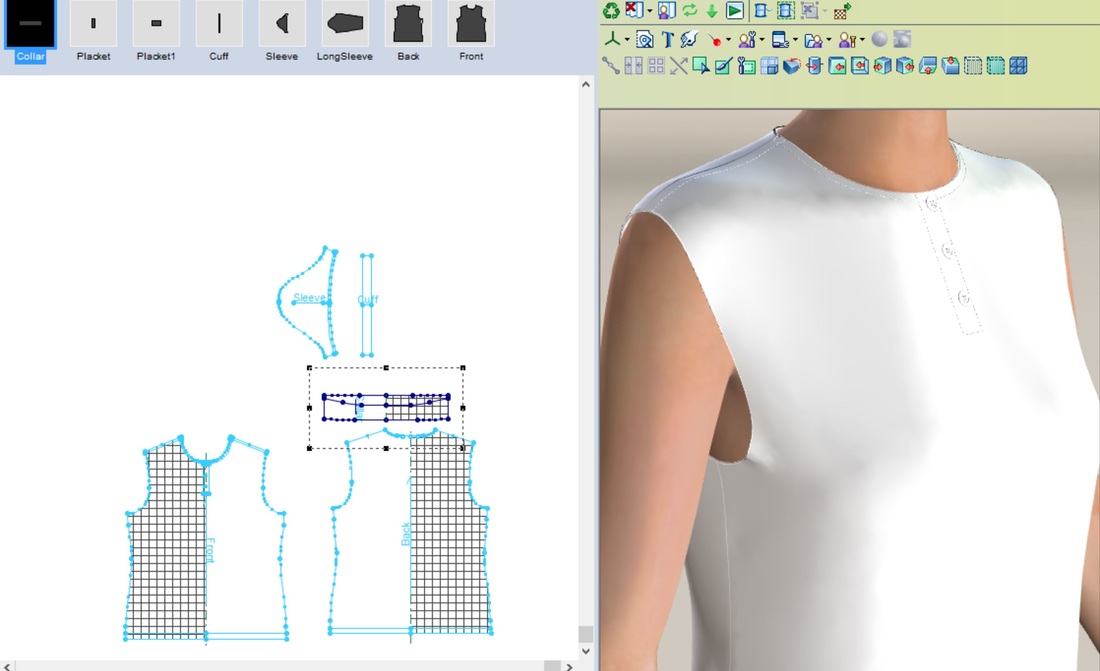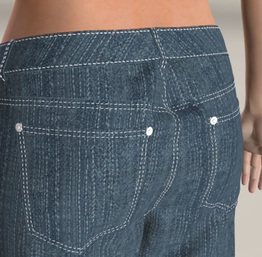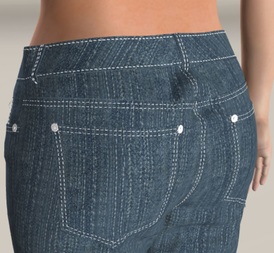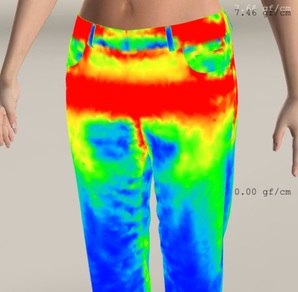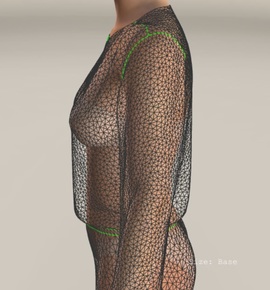|
This post is for those who wonder if 3D pattern-making systems can honestly assist with improving fit or reducing the number of fit samples. Yes, 3D can help with fit and reduce fit samples. What 3D cannot do is eliminate fit samples. Why, well the 3D avatar can't talk; at least not yet. The avatars can spin around and move but they can't tell you "my keys are going to fall out of this pocket" or "the armhole is too restricting, I can't drive a car in this blazer". Also, the movements are rather mundane. They can't get on a bicycle and tell you if the rise on a pair of bike shorts feels right for cycling. You can review things in 3D that you can't in a live model fitting. First, you can review the fit in steps as you would a muslin or during the draping process. Here's a photo of a polo shirt. I've told the system to ignore the sleeve and collar. Now I can see the armhole and neckline shape and verify before the sleeve and collar are attached. Second, you can identify some fit problems. Better yet, you can change the model size and shape to verify the fit problem is the same on a variety of body shapes. The only way to do that in a live fitting is to ask the model to wear padding. You certainly can't ask a live model to reduce one part of the body or make it perkier. There are also some fit tools incorporated into the system. One allows you to identify the tightest areas of the garment. For instance you can see if the tension is equal at the waist and hip. Viewing the garment in a mesh format allows you to see the ease over body. You can verify if there is enough or too much ease over body. If you have questions on what else 3D can and cannot do, please share. I'd love to answer them for you and I'm always looking for topics for future posts.
1 Comment
How detailed can 3D clothing samples be? The answer is, however detailed needed to meet the goal. If you need every stitch shown, it can be shown. 3D samples can include hardware; like buttons, rivets, and zippers. Fabric textures can be shown such as the rib collar in the below slideshow. Yes, it takes time and effort to add details, so if you are using 3D as a collaboration tool to explore style options during development, you may not need or want all the details. For instance if you are working with the designer to get an idea of the drape of the fabric, the fit of an armhole, or the depth of a neckline, you may not want to spend time and effort adding details. You can wait and add the details once the fit and styling are firm or go directly to physical samples.
If you are trying to convey the garment construction to a factory, you will want to add every stitch detail. Or if you are using 3D in place of actual samples for a client presentation, all the details are needed. 3D samples can also offer an opportunity to review the proportions of details such as button, buckle, or ring sizes. What length should the placket or vent be? How deep should you make a cuff or hem? Bottom line is, 3D offers many opportunities to make decisions before producing physical samples. |
